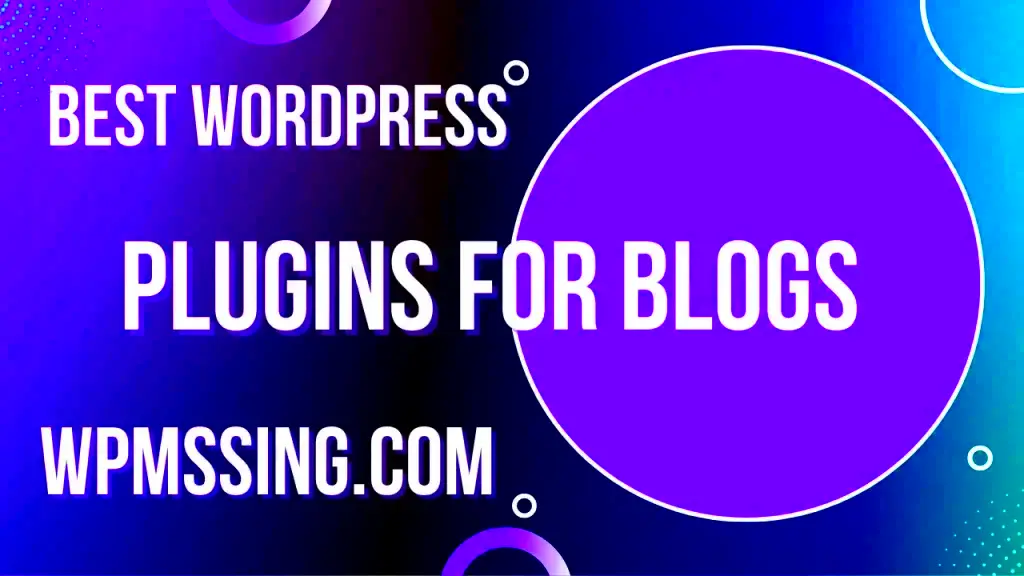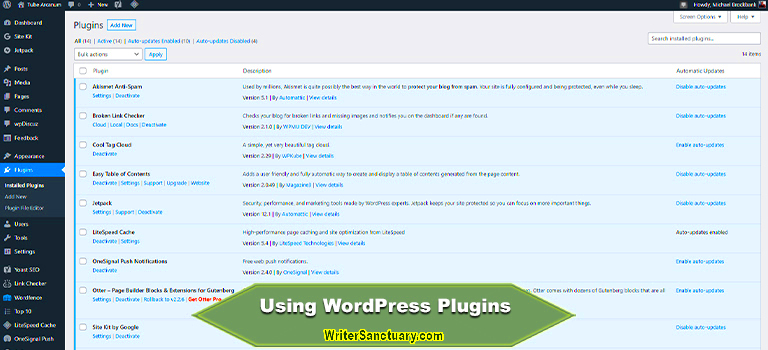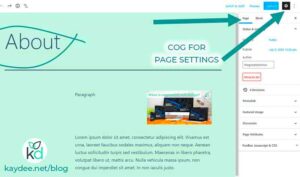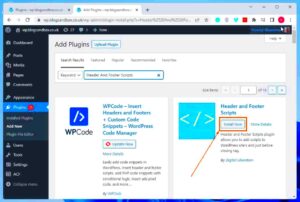Blogging has transformed the digital landscape, allowing individuals and businesses to share ideas, information, and creativity with the world. To make this journey easier and more efficient, WordPress offers a variety of blogging plugins. These plugins are powerful tools designed to enhance the functionality and management of your blog, allowing you to focus on what matters most: creating engaging content. In this post, we’ll explore the ins and outs of WordPress blogging
Why You Need a Blog Management Plugin

If you’re serious about blogging, a blog management plugin is not just a luxury—it’s a necessity. Here are some compelling reasons why you should consider investing in one:
- Time-Saving Features: A good management plugin automates repetitive tasks like scheduling posts, optimizing SEO, and managing comments, allowing you to spend more time writing.
- User-Friendly Interface: Many plugins come with intuitive dashboards that make managing your blog a breeze, regardless of your technical expertise.
- Performance Optimization: Plugins can help optimize your blog’s performance, improving load times and enhancing the user experience.
- SEO Enhancement: With built-in SEO tools, you can ensure your posts are optimized for search engines, increasing your blog’s visibility.
- Analytics and Insights: Management plugins often come with analytics features that provide insights into your audience’s behavior, helping you tailor your content.
In summary, using a blog management plugin can revolutionize how you approach blogging. By embracing these tools, you can elevate your blog and connect with your audience more effectively. Whether you’re a beginner or an experienced blogger, integrating a management plugin into your WordPress site is a smart step toward effortless blog management.
Top Features of Effective Blog Management Plugins

When you’re diving into the world of blogging, having the right tools is essential, and that’s where effective blog management plugins come into play. These plugins can significantly enhance your blogging experience, making it easier to manage content and engage with your audience. Here’s a rundown of some top features that you should look for:
- Content Scheduling: The ability to schedule your blog posts is a game changer. This feature lets you plan your content calendar in advance, ensuring a consistent posting schedule without the constant stress of writing on the fly.
- SEO Optimization: Effective blog management plugins often come equipped with tools to help improve your posts’ search engine rankings. Look for features that assist with keyword suggestions, meta descriptions, and readability checks.
- Analytics Tracking: Knowing how your blog performs is key to growing your audience. A good plugin should offer insights into traffic sources, engagement rates, and reader demographics.
- Social Media Integration: Plugins that allow you to share your posts automatically across various platforms can save time and increase visibility. Look for options that cater to all the major social networks.
- Comment Management: Managing comments can be quite a chore without the right tools. Plugins should offer features such as spam filtering and the ability to approve or disapprove comments easily.
These features not only simplify your blogging process but also allow you to focus more on creating great content rather than getting bogged down by administrative tasks.
How to Choose the Right Plugin for Your Needs
With so many blog management plugins available, selecting the right one for your specific needs can feel overwhelming. But don’t worry! Here’s a step-by-step guide to help you make an informed decision:
- Identify Your Goals: What do you want to achieve with your blog? Are you focused on growing your audience, improving SEO, or streamlining content creation? Define your goals first.
- Research Options: Start researching different plugins that align with your goals. Check reviews, ratings, and feedback from other users, so you can gauge the effectiveness of each option.
- Evaluate Features: Compare the features of different plugins. Make a list of must-have features versus nice-to-have ones. Ensure that the plugin offers the essential tools you need for your blogging journey.
- Check Compatibility: Ensure that the plugin you choose is compatible with your current WordPress version and any other plugins you might be using. This will save you from potential conflicts down the road.
- Free vs. Premium: Decide whether you want to go with a free plugin or if you’re willing to invest in a premium one. Premium plugins often come with additional features and better support.
Ultimately, the right plugin will depend on your unique blogging needs. Take your time, explore options, and choose a plugin that feels right for you. Happy blogging!
Step-by-Step Guide to Installing a WordPress Blogging Plugin
Installing a blogging plugin on your WordPress site can be a real game changer, making the process of managing your blog so much easier. Let’s walk through the steps to get you set up quickly and efficiently:
- Log in to Your WordPress Dashboard: Start by accessing your WordPress admin panel. Simply navigate to yourdomain.com/wp-admin and log in with your credentials.
- Navigating to Plugins: Once you’re logged in, hover over the Plugins option in the left-hand menu and click on Add New.
- Search for the Plugin: In the search bar, type the name of the blogging plugin you want to install. You can also browse popular plugins or use the Featured tab to find trending options.
- Install the Plugin: Once you find the plugin you like, click the Install Now button. WordPress will automatically download and install the plugin for you.
- Activate the Plugin: After installation, you’ll see an option to Activate. Click it to enable the plugin on your website.
- Configure Settings: Most plugins will have their own settings page. Look for it under the Settings menu or listed under the Plugins tab. Configure it according to your preferences.
And just like that, you’re ready to enhance your blogging experience! Remember to check for plugin updates regularly to keep everything running smoothly.
Exploring Popular Blog Management Plugins
With thousands of plugins available, choosing the right blog management plugin for your WordPress site can feel overwhelming. Let’s simplify things by exploring some of the most popular options available today:
| Plugin Name | Description | Key Features |
|---|---|---|
| Yoast SEO | A comprehensive SEO tool that helps optimize your content for search engines. |
|
| WPForms | A beginner-friendly form builder allowing you to easily create forms for your blog. |
|
| MonsterInsights | A Google Analytics plugin that helps you track user engagement on your blog. |
|
| Akismet | An essential plugin for filtering out spam comments on your blog. |
|
These plugins cover a range of functionalities, from SEO optimization to user engagement and comment moderation. Choosing a combination that fits your blog style will allow you to manage your site effortlessly and enhance user experience.
Tips for Optimizing Your Blogging Experience with Plugins
Managing a blog can sometimes feel like a juggling act, especially when you throw in the multitude of plugins available for WordPress. But don’t worry! Here are some handy tips to help you optimize your blogging experience and get the most out of those powerful plugins.
1. Choose Wisely
Not all plugins are created equal, so it’s essential to choose the right ones for your blog’s needs. Consider the following:
- Read Reviews: Check out user reviews and ratings to gauge effectiveness.
- Check Compatibility: Ensure the plugin is compatible with your current WordPress version.
- Look for Regular Updates: Choose plugins that are regularly updated and maintained.
2. Keep It Simple
Overloading your blog with too many plugins can lead to performance issues. Stick to the essentials:
- Limit the number of plugins to those that serve specific, necessary functions.
- Consolidate functionalities when possible; for example, some plugins offer SEO and social sharing features in one package.
3. Monitor Performance
Always keep an eye on your blog’s load time and overall performance post-plugin installation. Tools like Google PageSpeed Insights and GTmetrix can help you track this.
4. Regularly Update
Make it a habit to check for updates regularly. Updated plugins not only have improved features but they also patch security vulnerabilities.
5. Back Up Your Site
Before installing new plugins or updating existing ones, ensure you have a complete backup of your site. Tools like UpdraftPlus can provide you peace of mind.
By following these simple tips, you’ll find that your blogging experience becomes more efficient and enjoyable. Happy blogging!
Common Challenges and Troubleshooting Tips
As wonderful as plugins can be for enhancing your WordPress blog, they sometimes come with their own set of challenges. No worries—here are some common issues you may encounter along with handy troubleshooting tips to help you navigate them!
1. Plugin Conflicts
When multiple plugins are installed, they can sometimes clash with one another. If you notice your site behaving oddly after a new plugin installation:
- Disable the newly added plugin to see if the issue resolves.
- If it works, contact the plugin developer or check support forums for solutions.
2. Sluggish Site Performance
If your blog starts loading slower, it might be due to heavy plugins. To combat this:
- Use caching plugins like WP Rocket.
- Optimize images with tools such as Smush or EWWW Image Optimizer.
3. Updates Breaking Features
Sometimes, an update can mess up plugin functionality:
- Rollback to the previous version of the plugin if available until the issue is resolved.
- Reach out to the support team for help and reporting the issue.
4. Security Vulnerabilities
Keeping your site secure is paramount:
- Limit plugin usage to those from reputable sources.
- Regularly scan your site for malware using security plugins like Sucuri or Wordfence.
By being aware of these common challenges and knowing how to tackle them, you can enjoy a smoother blogging journey. Remember, a little troubleshooting goes a long way in ensuring your WordPress blog shines!
Blog in WordPress Plugin for Effortless Blog Management
Managing a blog can be a challenging task, especially when it involves multiple aspects like content creation, SEO optimization, and audience engagement. Fortunately, the right WordPress plugins can streamline this process and enhance your blogging experience significantly. Here are some essential plugins that can help simplify your blog management:
| Plugin Name | Description | Key Features |
|---|---|---|
| Yoast SEO | A comprehensive SEO solution for optimizing your blog for search engines. |
|
| Jetpack | A multifunctional plugin that offers security, performance, and growth tools. |
|
| Akismet | A spam filtering plugin that helps protect your blog from unwanted comments. |
|
| WPForms | A user-friendly drag-and-drop form builder plugin for creating contact forms. |
|
By integrating these plugins into your WordPress blog, you can effortlessly manage your content, optimize for search engines, engage with your audience, and maintain a clean spam-free environment. Leveraging these tools will not only save time but also allow you to focus on what you do best: creating exceptional content that resonates with your audience.
Conclusion
Elevate your blogging experience by implementing the right WordPress plugins, ensuring efficient management, enhanced engagement, and optimized visibility.



